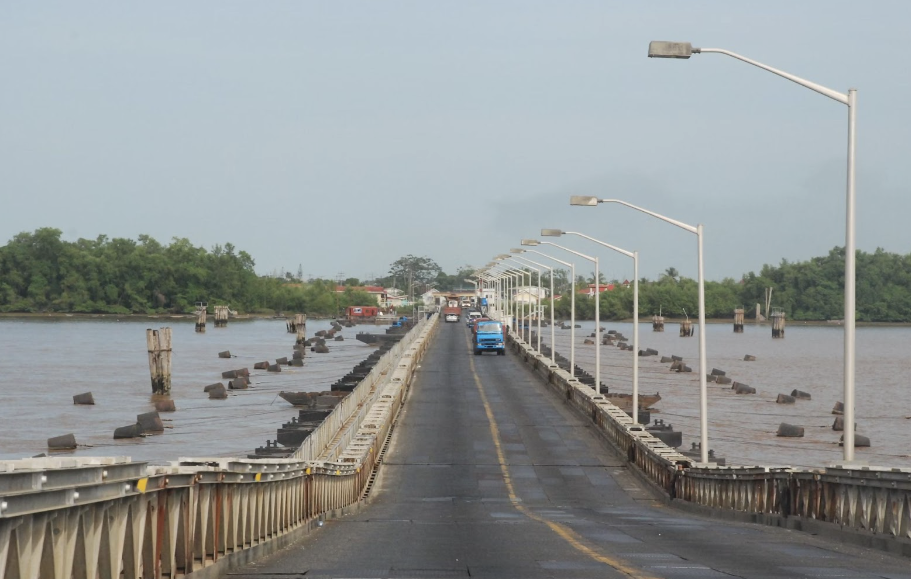In 2015, ExxonMobil discovered major oil deposits off the coast of Guyana, a small Caribbean nation that, although extremely rich in natural resources, remains one of the poorest countries in the region. However, according to Rystad Energy, an independent energy research and consulting company, since 2015, Guyana has been the “global leader in total offshore discoveries” with billions of barrels of oil having been discovered in the Stabroek block, a 6.6 million-acre site in the Atlantic Ocean. Though an oil field is defined as any area holding oil deposits, a block is a specific area leased out by a company. The massive amounts of oil discovered off Guyana’s coast have significant implications for the country’s economy and its political stability. Government tensions, local development, and environmental impacts are key factors in understanding the benefits and drawbacks of Guyana’s newfound wealth.
Originally a Dutch colony that was passed to the British in the 1800s, Guyana boasts a rich cultural history. The two main political parties, the People’s National Congress (PNC) and the People’s Progressive Party (PPP) are largely divided among racial lines, with the PNC drawing more Afro-Guyanese interests, and the PPP, Indo-Guyanese ones. In 2018, the PNC triggered a political crisis by forming a coalition with other smaller parties to oppose the PPP. The coalition quickly dissolved in a tight 2018 vote, triggering a “snap election” in 2020, which the PPP won by one seat. The prospect of the oil discovery increasing Guyana’s wealth made it a trending topic of economic and political debate. According to the World Justice Project, an independent organization focused on building knowledge of legal processes globally, there is a high level of distrust of Guyanese government officials by the citizenry, with 54% of Guyanese respondents stating that they believed that all or most parliament/congress members were corrupt. With the incredible influx of money into the country’s economy, political tensions, exacerbated by high levels of distrust, will continue to rise both nationally and internationally. In fact, rising tensions over land disputes between Guyana and Venezuela have already drawn international attention, with the United States increasing military aid to protect Exxon and Guyana’s assets in the Stabroek block.
Such an increase in wealth in Guyana will inevitably affect local communities, though the extent of this economic boost is uncertain. According to AP News, ExxonMobil’s discovery of oil off Guyana’s coast and subsequent partnership with the government has resulted in the creation of jobs and wealth, especially in construction. Large infrastructure projects, including “the construction of 12 hospitals, seven hotels, scores of schools, two main highways, [Guyana’s] first deep-water port, and a $1.9 billion gas-to-energy project,” were made possible thanks to the reinvestment of oil industry revenue into the Guyanese economy, and have created jobs for many locals. According to the World Bank, poverty in Guyana decreased from “60.9% [of the population living under the poverty threshold] in 2006 to 48.4% in 2019,” though more current poverty data is unavailable. Continuous infrastructure projects will give Guyanese jobs and inject the economy with much-needed funds. However, Guyana’s homogenous economy and heavy reliance on the oil industry, with “oil exports alone account[ing] for about 88% of total exports in 2022,” means that Guyanese are particularly vulnerable to economic shocks.
Though infrastructure projects have been ongoing, locals hold mixed reviews of the change (or lack thereof) that they have seen since 2015. According to interviews conducted by AP News, some Guyanese are hopeful, while others feel like they haven’t seen any meaningful change. Considering several intersecting axes of poverty and marginalization, some communities are less likely to feel the benefits of the oil boom. Specifically, though Indigenous Peoples in Guyana, known locally as ‘Amerindians,’ only make up around 10.51% of the population, they account for over half of those living in poverty. Land rights, protection of biodiversity, and legacies of colonialism are specific issues that Amerindians face, and increased militarization of the Guyana-Venezuela border will impact their safety and access to resources.
The discovery of oil off the coast of Guyana also has important environmental implications. With its low-lying coast, Guyana is vulnerable to increased flooding and natural disasters such as tsunamis and hurricanes, which will inevitably become more frequent with climate change. Considering how large and prolific the Stabroek block is, increased CO2 emissions are imminent, with one barrel of fuel oil producing roughly 940 pounds (about 425 kilograms) of carbon dioxide.
While Guyana’s oil was discovered nearly 10 years ago, the implications for politics, poverty, and the environment must still be studied. Wealth may take time to reach the poorest in Guyana, but with the amount of money being reinvested into the economy and projects promoting better infrastructure, there is hope that poverty levels will eventually decrease.
Edited By Jamie Silverman

